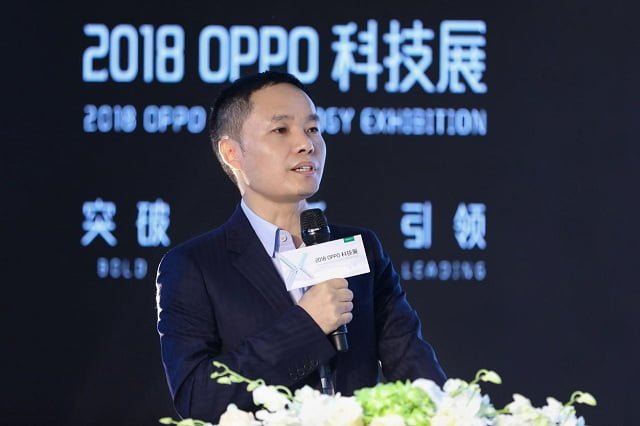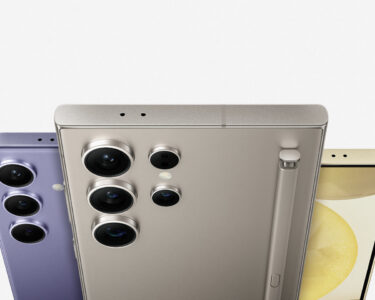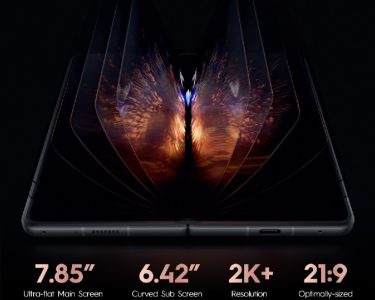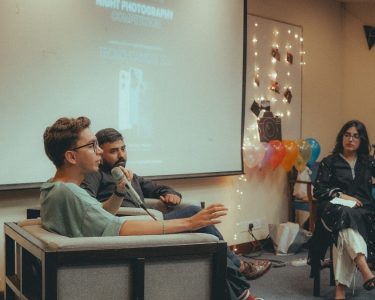OPPO today made a range of new announcements at its technology focused ‘2018 OPPO Technology Exhibition’ in Shenzhen. Tony Chen, Founder, and CEO of OPPO, announced an increase in R&D spending to RMB 10 billion (about USD 1.43 billion)next year – a 150% year-on-year increase – and that the company would continue to increase investment on a yearly basis. With the increased R&D capital, OPPO will integrate its supply chain and build on its technical expertise to enhance the company’s technological capabilities. Furthermore, OPPO will leverage AI to develop a range of smart devices, including smart watches and smart home technologies, to explore and meet the increasingly rigid demands of consumers in the age of the Internet of Things (IoT).
Tony Chen, Founder and CEO of OPPO delivers a speech at the AI session during the 2018 OPPO Technology Exhibition
5G a trend OPPO must embrace
As a technology company, OPPO focuses relentlessly on the development of frontier technologies like 5G. “5G is a trend OPPO must embrace. In addition to striving to become the first manufacturer to launch 5G smartphones, OPPO’s exploration of application opportunities in the 5G+ era will ultimately determine the value of 5G,” Tony Chen stressed. “OPPO will fully integrate 5G with applications and user insights, and continuously innovate to provide users with revolutionary, necessary, convenient and seamless experiences.”
Must Read: 5G is thought to be battery killer, but one company seems to have a secret weapon in-stored
OPPO established its 5G team as early as 2015 and began R&D at the onset of 5G standards. When 5G standards were frozen in December 2017, OPPO quickly invested in the development of 5G products, taking the lead in enabling the interoperability of 5G signaling and data links in August 2018 before realizing the first 5G smartphone connection this past October.
The benefits of AI realized in the 5G era
OPPO has applied AI technologies across a wide range ofapplicationsincluding photography, facial recognition and fingerprint identification while introducing many innovative features including an AI-powered beauty camera, 3D portrait lighting and intelligent recognition scenarios. “The benefits brought about by AI technologies will truly be realized in the 5G era. For OPPO, AI is both a capability and a mindset, and our development prospects for AI are very broad,” Chen said.By employing AI to continuously learn users’ habits, OPPO smartphones are able to proactively provide better services and more personalized experiences.
“In the future, smartphones will become intelligent personal assistants – and this is something OPPO will definitely enable,” Chen continued. “The smartphone is one of the best vessels for AI, but there is still considerable room for improvement. OPPO will actively embrace artificial intelligence while dedicating focus and resources to cutting-edge AI technologies and applications.”
Integration of technology, art and humanity in smart devices and homes
Closing his speech, Tony Chen emphasized that OPPO is committed to becoming a leader in an era where 5G, AI and IoT are broadly applied. “We must dare to explore, dare to make breakthroughs and dare to innovate. In the future, OPPO will fully integrate technological innovation with art and humanity, to develop smart devices and smart homes with the smartphone at their core, and an underlying mission of continuing to meet people’s expectations for a better life.”
OPPO has always attached great importance to R&D in leading-edge technology and has a design in place for the future based on its deep insights. Serving as a platform for internal stakeholders to exchange ideas and technology, the 2-day OPPO Technology Exhibition included four major sessions – AI, Big Data, Cloud + IoT and 5G – and 12 exhibition zones covering more than 80 innovative projects. While showcasing OPPO’s current R&D capabilities and future technology roadmap, this year’s exhibition also facilitated a dialogue between experts from a wide range of industries, effectively opening the door to enhanced opportunities for future technological development.




